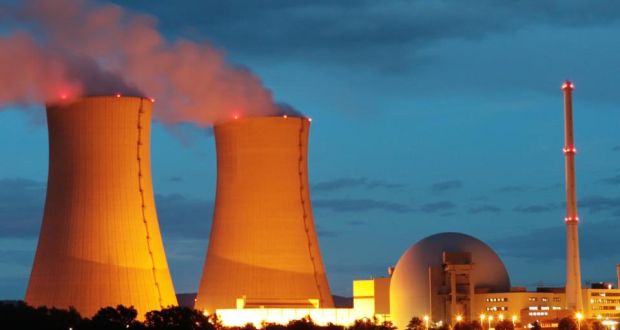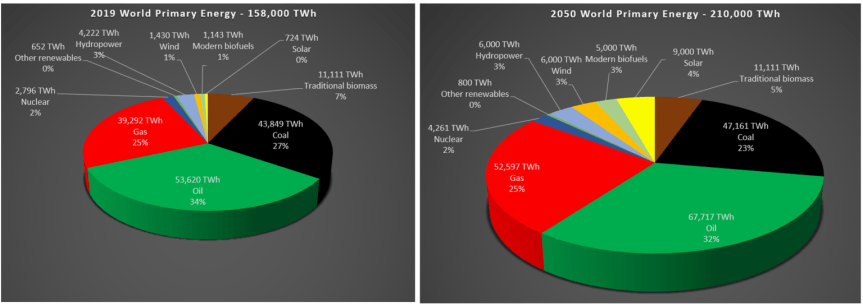It only takes eighth grade mathematics and a little logic to work out that there will never be any grand transition to an all wind and sun-powered future – it’s an impossible dream, to top them all.
As Leen Weijers explains below, the fact that this is even a subject for discussion is based on a grab bag of lies and sleight of hand rhetoric, whereby meaningless averages are used to downplay and overwhelm minute-by-minute actuality, of the kind that matters when you’re trying to keep modern civilisations running around-the-clock.
There Is No Energy Transition, Just Energy Addition
Watts Up With That?
Leen Weijers
12 March 2023
As Liberty Energy CEO Chris Wright explained in his viral video a few weeks ago, dishonest terminology surrounds the climate debate. One of these terms is “Energy Transition”. The term’s use gives the impression that there exists a quick, easy and scalable alternative to eliminate fossil fuel use without serious impact on people.
Current primary energy distribution by source, and forecasts by organizations like the EIA in their International Energy Outlook 2021, show that this “energy transition” is non-existent. As you can see in the title graph above, and also in Liberty’s ESG report on Bettering Human Lives, no present quantity of primary energy generated by oil or gas is currently replaced by renewables. A couple of headlines from the report that you don’t hear a lot:
- Global primary energy use is about to grow by almost 50% between 2020 – 2050 as impoverished people rise from poverty;
- Oil consumption rises in all EIA scenarios. In their “Reference Scenario”, oil consumption rises at about 1 million bopd/year for the next 30 years, almost the same steady yearly increase of the last 5 decades;
- Natural gas consumption will continue to growth through 2050.
The reason for this growth is simple: fossil fuels are abundant, cheap and efficient to provide reliable and dense energy at scale. They have helped to generate a quality-of-life revolution for a portion of humanity, and people in poverty who have missed out on this blessing rightfully want what you and I already have.
Sadly, few report on this blessing we take for granted. Good news about renewables breaking records, however, is widespread and often inflated. There are a few marketing strategies renewable advocates have used that make it appear as if renewables have a larger market share than they really have:
First, using the word “energy” or “power” when they mean “electricity”. Take this Reuters report as an example: “Renewable energy is expected to account for around 46% of German power consumption this year….” This sounds like Germans are running on renewables for almost half of their energy needs. But this is JUST for electricity. According to the BP Statistical Review and graphed below by OurWorldInData.org for world electricity vs primary power, worldwide electricity represents only 17% of all primary power. That’s also where is currently stands in Germany. In 2021, Germany’s top three primary energy sources were oil, natural gas and coal.
Second, reporting renewable records without mentioning they only last a short time. As an example, this article boasts renewables powering 85% of Germany’s electricity needs. But like the electricity primary power sources reported in the plot below reported by Timera Energy, records in wind and solar don’t last very long, and there are times when they don’t provide anything at all. Fossil fuels are there to back them up – you are welcome. Energy reliability is a marathon, not a sprint.
Third, reporting power capacity, not energy output. Renewables really shine using this metric because they don’t work most of the time. If you have ever spent time in western Europe, you will know that the sun there, like most Europeans, only has a 32-hour work week, while it gives little heads up when it will show up. What to do during the remaining 136 hours that week? You need to build a lot of power capacity to harvest a little energy. As per BP Statistical Review, the world capacity factor is only 14% for solar and 26% for wind. Therefore, if you see a historical power capacity growth curve, divide the solar curve’s slope by 7 and the wind curve’s slope by 4 to get energy output. Consumers pay for MWh, not MW.
Lastly, lumping in “traditional biofuels” to boost the share of renewables as part of total energy needs. These traditional biofuels kill millions of people yearly through PM2.5 particle release during indoor cooking. If there is a “transition” humanity needs ASAP, it is the transition from the traditional renewable cooking fuels to clean-burning fossil cooking fuels.
These unfair reporting methodologies have led to confusion and a belief that an “Energy Transition” is currently in the making. It is not.
The EIA primary energy forecast for the next 30 years shows that ALL sources of energy are growing. While renewables claim a larger fraction of a growing pie, fossil fuels are expected to grow faster in absolute terms.
Recently, a spark of sanity has returned to the debate about nuclear power. For a reliable, cost-effective, low-carbon and scalable energy transition, we need to take the path proposed by Robert Bryce in his book Power Hungry. In the near-term, we need more natural gas, which reduces our CO2 footprint and is cheap, reliable and abundant. For the long-term, we need to build nuclear energy, hopefully eventually nuclear fusion. Before that, let’s hope a spark of sanity returns to the discussion about the “Energy Transition”.
Watts Up With That?





